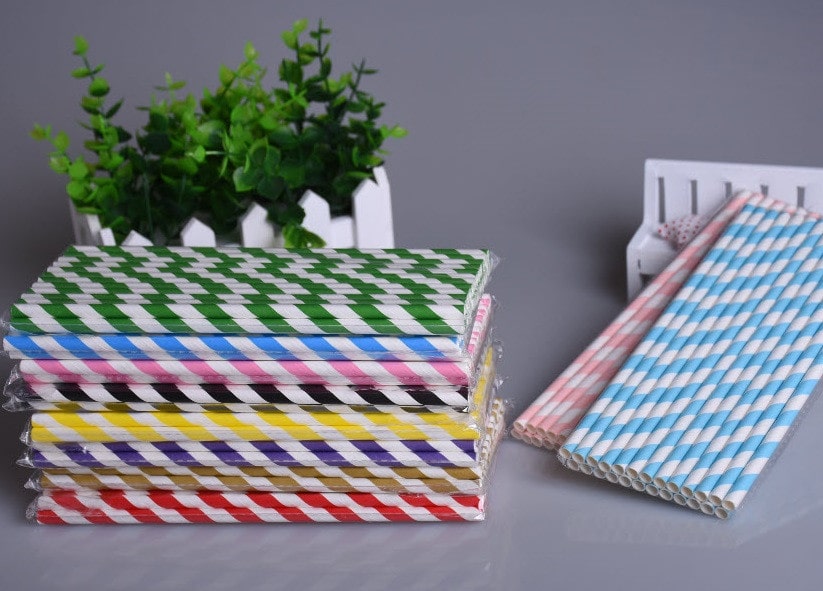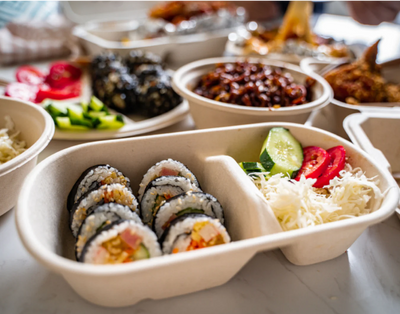Paper straws were once considered a significant part of the environmental revolution, prominently featured in changing the world's perception of the harmful effects of plastic straws. However, are they truly the best choice? In this article, EQUO will delve into the advantages and disadvantages of paper straws, from their role in environmental protection to potential risks related to hygiene and health.
1. What Are Paper Straws?
Paper straws, as the name suggests, are straws made from paper, a more environmentally friendly option compared to traditional plastic versions.
Many people might think that paper straws have only recently appeared, but they have actually been around for quite some time. In 1888, Marvin Stone, often regarded as the "father" of the paper straw, created the first version by wrapping paper around a fountain pen. It was a creative idea to replace traditional straws made of reeds or straw.
However, paper straws gradually fell out of favor as plastic straws emerged with low production costs and high durability. But life keeps evolving, and recently, paper straws have made a strong comeback. The growing environmental awareness and efforts to reduce plastic waste have made paper straws become popular once again. Many countries, businesses, and consumers are favoring and using them as an environmentally friendly alternative.
After having delved into the origins and history of paper straws, let's now take a closer look at their advantages compared to plastic straws.

Source: Internet
>> Read More:
- Not-Paper Straws: 7 Best Biodegradable Straws For Our Environment
- PFAS - “Forever Chemicals” Found In 90% Of Paper Straws
- Paper Straws vs Plastic Straws: Should You Switch To Paper Straws?
2. Advantages of Paper Straws Over Plastic Straws
Whether you are interested in environmental protection or not, paper straws bring unique advantages to businesses and its users:
2.1. Environmental Protection
One of the most significant advantages of paper straws is their natural biodegradability. This helps minimize non-biodegradable waste, protecting our ecosystems and planet.

Source: Internet
2.2. Versatile, Stylish, and Unique
With advancements in printing technology, paper straws now come in various designs and colors. This adds fun and memorable experiences to gatherings and events.
2.3. Creating a "Green" Image for Businesses
For businesses, incorporating paper straws into their strategies is an effective way to showcase responsibility and gain favor with customers regarding environmental protection.
However, there are also less-than-ideal aspects of paper straws that need to be considered. Let's explore the potential risks and disadvantages of them together.
3. Disadvantages - Drawbacks of Paper Straws
While paper straws have several advantages, they are not without their drawbacks. Additionally, some seemingly beneficial aspects can turn into potential disadvantages:
3.1. Some businesses may not consistently adopt green initiatives
Some businesses implement green initiatives by using paper straws, but they might not ensure consistency by using plastic utensils, disposable cups, and nylon bags for takeout.
3.2. Resource-Intensive Manufacturing
The production of paper straws requires a significant amount of valuable resources such as water and paper, which is derived from trees. The substantial resource consumption raises questions about the sustainability of the manufacturing process and its environmental impact.
3.3. Prone to Water Absorption - Single-Use
Paper straws do not last long when in contact with water or other liquids. They quickly lose durability and can impact the user experience. Reusability becomes practically impossible.
PFAS - To address their sogginess, some manufacturers coat their straws with PFAS - otherwise known as the forever chemical. PFAS makes paper straws more durable, but make them unable to decompose. This not only affects the environment, but also our well-being.

Source: Internet
3.4. Hygiene and Health Safety Risks
Paper straws can harbor bacteria and mold if not produced and stored correctly. This raises concerns about hygiene and food safety when using paper straws in beverages.
As mentioned above, paper straws containing PFAS can affect the environment and our water sources. PFAS has been found in water sources and animal blood around the world. This also raises a series of questions about the impact of paper straws on health and the environment.
>> References: Nearly half of the tap water in the US is contaminated with ‘forever chemicals,’ government study finds
>> Read more: PFAS: What They Are, How They Are Classified and Why They Are Harmful
With these challenges in mind, we need to explore more environmentally-friendly solutions and learn how to replace paper straws.
4. The Best Environmental Alternatives to Paper Straws
Given the challenges of climate change and environmental pollution, we need to seek and implement more environmentally friendly alternatives to paper straws:
4.1. Use Eco-Friendly Straws
- Grass straws: Made from natural grass, offering an eco-friendly option.
- Rice straws: Produced from 100% rice and tapioca starch, colored using natural vegetable and fruit juices, and biodegradable, ensuring safety.
- Coffee husk straws: Crafted from coffee husks, they are 100% plastic-free, home-compostable and have a relaxing aroma of coffee.
- Sugarcane fiber straws: Made from sugarcane fiber, with a mild, sweet aroma and biodegradable properties that won't alter the taste of your beverage.
- Coconut straws: Manufactured from 100% fermented coconut water, they are highly flexible, do not dissolve in liquid.
All these products are made from 100% natural materials and can completely biodegrade in the environment within 3-6 months. These straws not only protect the environment but also ensure safety for consumers, suitable for all types of beverages. EQUO offers these solutions as alternatives to paper straws, contributing to a more comprehensive reduction of environmental pollution.

4.2. Personal Water Bottles
Using personal water bottles reduces the need for disposable straws. These bottles often have convenient designs, good heat retention, and can be used repeatedly, saving money and the environment.
4.3. Small Lifestyle Changes
Small changes in daily routines can also help minimize the use of paper straws. For instance, refusing straws when ordering drinks for takeout, carrying your reusable straw, or opting to drink directly from a cup can make a difference. When each of us consciously makes these changes, we collectively contribute to a more sustainable future for our planet.
Paper straws have marked a significant milestone in raising awareness about environmental protection. However, we should not stop here. To build a greener, cleaner, and more sustainable future, we need to act together to change our awareness and habits regarding the use of paper straws, aiming to minimize environmental impact. On the path to a more eco-friendly world for future generations, EQUO hopes to walk alongside you.


